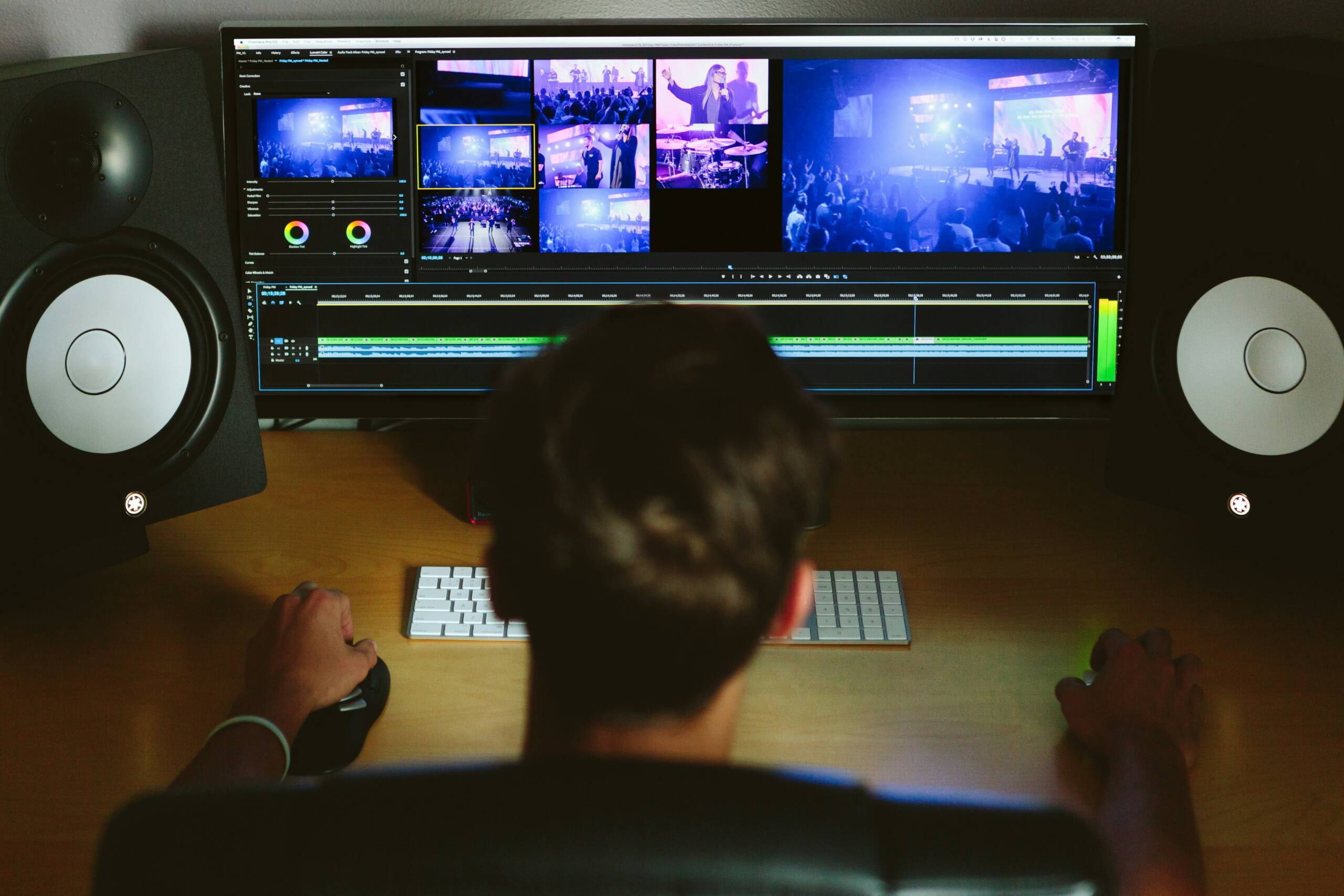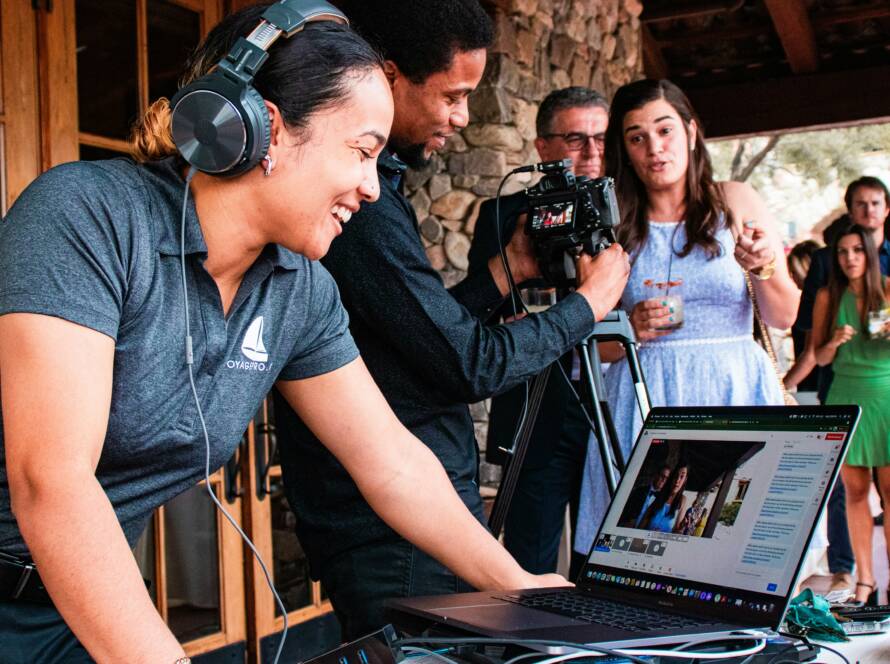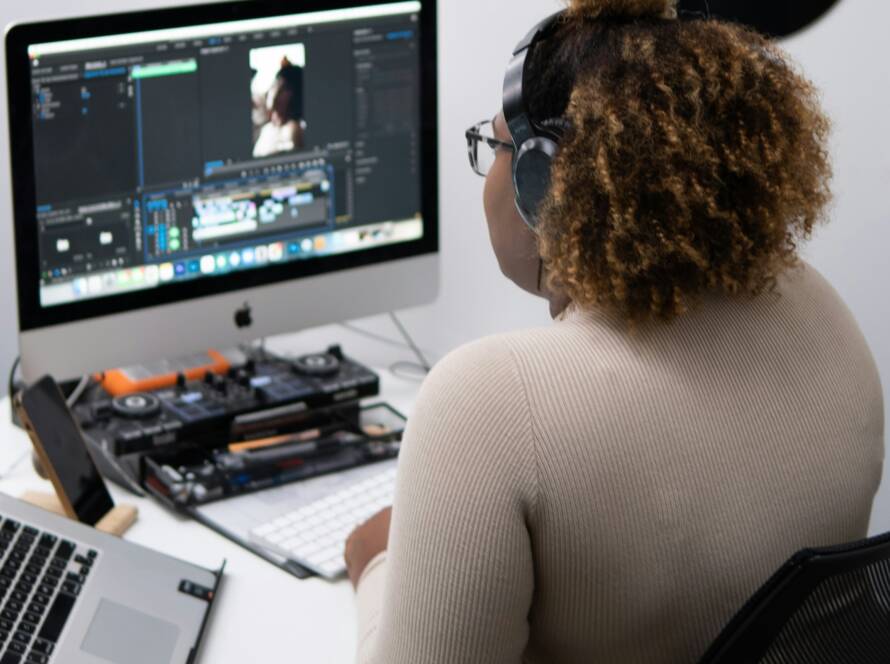Having a streamlined process for content creation is one of the keys to success, part of the whole picture is the video editing process. Post-production elements help a lot in making your video content stand out from the rest.
In this article, one of our amazing video editors will tell you why having an organized process in video editing is important.
Table of Content
- What is Video Editing in Content Creation?
- Elements of Video Editing
- Best Tools for Video Editing
- Rough Cut in Video Editing
- Sound Production in Video Editing
- Visual Effects in Video Editing
- Color Grading in Video Editing
- Fine Cut in Video Editing
- Transition in Video Editing
- FAQ
- What is video editing in the context of content creation?
- What are the key elements involved in video editing?
- What are some of the best tools to use for video editing?
- Can you explain what color grading is in video editing?
- What do we mean by visual effects in video editing?
- What do transitions mean in the context of video editing?
- Considering Video Editing Companies in Content Creation
What is Video Editing in Content Creation?
In the vast landscape of content creation, a crucial component that often sets apart amateur endeavors from professional productions is the video editing process. This might bring to mind images of extensive software, crammed with flashing dials and sliders that only a rocket scientist would dare to touch. However, in reality, the heart of video editing is a fusion of storytelling and technical know-how, molding raw footage into a coherent and captivating narrative.
The magic of video editing unfolds behind the scenes- where unceremonious clutters of clips, sound bites, and visual effects morph into powerful stories, channeling the creator’s intent while invoking the desired emotional response from the audience. Whether you are concocting laugh-out-loud comedic content, inspiring travel montages, or thought-provoking documentaries, mastering the ins and outs of the video editing process can elevate your storytelling prowess, making each frame count in this digital tapestry of content creation.
And hey, who knows? With a bit of practice and patience, you might just find that those mysterious dials and sliders are better friends than foes in your creative journey. Now, let’s tackle this beast together, shall we?
Elements of Video Editing
Navigating through the labyrinth of the basics of video editing can be a whimsical experience, brimming with surprises. Picture this: you’ve meticulously captured every small and big moment, cradled your camera like it’s the most precious thing on earth and you’re all set to intertwine this raw footage into a seamless story. However, is shooting high-quality footage enough? Absolutely not! The secret sauce to gaining a deluge of “wow” expressions lies in a little bit of magic, infused with stellar video editing skills.
Now, let’s dive into this creative ocean and fish out some of the pearls. First and foremost, sequencing is the bedrock of video editing. It’s all about arranging your clips in a logical and appealing way that packs a punch. It’s kind of like solving a jigsaw puzzle, where every piece connects to tell a unified story. Then we have cutting on action which is all about making your transitions smoother than a hot knife through butter. Sounds intriguing, doesn’t it? And then, we can’t leave out sound editing, which can be a game changer. Because, let’s be honest, who likes watching a video with crappy sound? Pretty sure, you wouldn’t appreciate your favorite superhero swooping down to save the world from chaos in pin-drop silence. That’s a no brainer, right? Well, these are just a few droplets in this ocean called the basics of video editing. So, put on your creativity hat, and let’s surf this creative wave together.
Best Tools for Video Editing
Whoa, hang on to your editing hats, content creators! Just like the secret ingredients to Grandma’s world-famous apple pie, some tools spice things up in the video editing process. And nope, I am not referring to your powerful espresso machine or your cool sci-fi posters, although they do make the task a lot more fun. No, we’re talking about the pro-grade software that becomes your trusty sidekick as you navigate the video editing steps.
A quick nip here, a basic tuck there, et voila! If you are zapping through the video like some techno-wizard creating awesome snappy loops and heart-stopping transitions, you are probably glued to Adobe Premiere Pro or Final Cut Pro. If you are more of a beginner but hungry to learn, tools like iMovie or Filmora might be your new BFF. With these mighty tools, you morph from a regular Joe to a master visual storyteller. But remember folks, the spice doesn’t make the meal, it merely enhances the flavor. So pick your tool, roll up those creative sleeves and just cook up something that makes the digital world go ‘Wow!’.
Rough Cut in Video Editing
Post-production is no joy-ride, folks! It’s the behind-the-scenes magician that turns raw, unedited footage into a smooth cinematic marvel, and an essential part of that process is the rough cut. Think of it as the blueprint, or the “first draft”, if you will. It’s the initial cut version of your video that’s put together for the first time with all the shots roughly placed in order. Pardon the pun; it’s called rough for a reason.
It’s chaotic and messy, yes; but it’s where you get to splatter all your creative juices on the canvas! You could have hours of footage at this stage, but you’ll be putting together tighter scenes, forming a narrative, and really starting to see your masterpiece take shape. Trust the process, alright? It might not look pretty at first; but remember when you first learned to ride a bike, you didn’t start with doing backflips!
Sound Production in Video Editing
Lifting the curtain, part of our magic sauce lies in the intricacies of sound production. Imagine having all the vibrant colors of a Van Gogh painting, but with audio. We play with sound the way a maestro plays with an orchestra, layering rhythm, volume, and tone to create an auditory spectacle. Our tool of choice for this sonic wizardry is a brilliant little piece of software called DaVinci.
Now what sets DaVinci apart is its sound-mixing prowess. With it, we can weave any audio file into your footage, creating the perfect background score or voice-over. Plus, DaVinci allows us to adjust the audio to match the tone and pace of your video like a glove fitting a hand. Ooho! imagine smoothing out a noisy phone call recording, or dialing up the bass in a groovy electronic beat. It’s like being a kid in a candy store with all the sweet possibilities!
Visual Effects in Video Editing
Have you ever marveled at how impossibly dramatic scenes come to life in movies or how whimsically engaging a music video seems? Well, hats off to our unsung heroes, the visual effects wizards who work their magic behind the scene. Let’s dig into their essentials – their tools. Adobe Premiere, ain’t no stranger to any video editor. This robust, professional software is like a handy palette serving creative minds to paint their virtual dreams into reality.
Imagine a scene where a YouTube creator wants to promote a mini travel series. Adobe Premiere could sprout a gigantic monster in the background of the serene beaches, or turn the normal city skyline into an alien invasion. Sounds fun, right? But it’s not all rainbows; manipulating these effects requires an in-depth understanding of timing, light, shade, texture, and a lot more. Yet, when all these elements are finessed together, any content can be converted from mundane to supremely engaging, and that’s when those ‘views’ and ‘likes’ start pouring in! After all, aren’t we all suckers for a little bit of drama!
Color Grading in Video Editing
Sure, let’s dive into the intriguing world of color grading in video editing, shall we? Color grading, it’s that secret sauce that adds a dash of moxie to your videos. It’s like Photoshop for a video, but on steroids. You’ve probably noticed videos on YouTube with vivid hues or edits that dramatically catch your eye. Well, that’s color grading working its magic.
Say you recorded a sequence during a dull overcast day, but you long for your video to scream sunny beach day – ta-da color grading. Or maybe you’re going for a moody, atmospheric vibe, giving viewers a sense of tension as they follow your narrative on YouTube. In both cases, color grading helps craft the look and feel, emphasizing or even altering moods. So if you’ve been pondering on why your pop-artist-review videos lack that extra punch that other successful YouTubers have, it’s probably a high time you hopped onboard the color grading train.
Fine Cut in Video Editing
Churning out video content for social media is a wild ride, and every content creator knows the real fun (and occasional hair-pulling) begins at the fine-cut stage. This is the point where the puzzle of raw footage finally starts looking like the masterpiece you envisioned. Trimmed to perfection, seamless transitions, and perfectly synched audio – voila! But mind you, it’s not just about hitting the delete button on those ‘not-so-perfect’ parts.
Consider this – you’re creating a video for your YouTube channel. You’ve got the whole shebang: the storyboard, the script, and the footage. Now, it’s fine cut time. You want to make sure every frame tells your story just right. It has to be engaging, compelling, even share-worthy. With a series of expert trims, your video takes form. No more foggy transitions or dragging dialogues. Rather, it’s a smooth sail of visuals that hits all the right chords with your viewers. Sure, it’s time-consuming but hey, once done right, it’s what takes your video from plain ‘meh’ to ‘must-watch’ on social media. And let’s not forget – more views, more likes, and a legion of new subscribers. Not too shabby, eh?
Transition in Video Editing
Transitions are the ultimate spice in the recipe of video editing, adding a flavorful touch that seamlessly ties all the ingredients together. They act like bridges, connecting different scenes or shots in a video to ensure a smooth flow of your story. So, whether you’re after a snappy jump cut or a swooping pan shot transition, the primary goal remains consistent; to maintain your audience’s engagement and guide them through the narrative of your content.
Documentation of video editing is filled with abundant mentions and examples of creative transitions. Remember that heart-stopping moment from “2001: A Space Odyssey” where a bone thrown in the air transforms into a starship? That’s a stellar example of a match cut. Ever chuckled at those fun zoom-ins on “Brooklyn Nine-Nine?” The art of crash zoom. All these are the handiwork of transitions, techy conjuring tricks video creators utilize to take their content from ‘just another video’ to a compelling story that keeps viewers hooked. And guess who can give your content this magic makeover? Yep, you got it! Your friendly neighborhood video editing studio. Just sayin’.
Don’t forget to check out this video about how to successfully catch viewers’ attention and engagement with professional video editing.
FAQ
What is video editing in the context of content creation?
Video editing in content creation is the process of assembling, arranging, enhancing, and finalizing video footage to create a cohesive and engaging piece of content. This can include everything from trimming and arranging clips, to adding effects, music, and transitions.
What are the key elements involved in video editing?
The key elements of video editing include the selection and sequencing of footage, the addition of audio, text, and effects, and finalizing the video for distribution. This can also involve colour grading, sound production, and the creation of transitions.
What are some of the best tools to use for video editing?
There are many excellent tools available for video editing, ranging from professional-grade software like Adobe Premiere Pro and Final Cut Pro, to more user-friendly options like iMovie and Filmora. The best tool for you will depend on your budget, your skill level, and your specific needs.
Can you explain what color grading is in video editing?
Color grading in video editing is the process of altering and enhancing the color of a video. This can be done for aesthetic reasons, to create a certain mood, or to achieve continuity across the video.
What do we mean by visual effects in video editing?
Visual effects in video editing involve the addition of elements to the video that were not present in the original footage. This can include animations, CGI, and other special effects that enhance the visuals and storytelling of the video.
What do transitions mean in the context of video editing?
In video editing, transitions are used to smoothly move from one clip to another. This can be a simple cut, or it can involve more complex effects like fades, wipes, or dissolves.
Considering Video Editing Companies in Content Creation
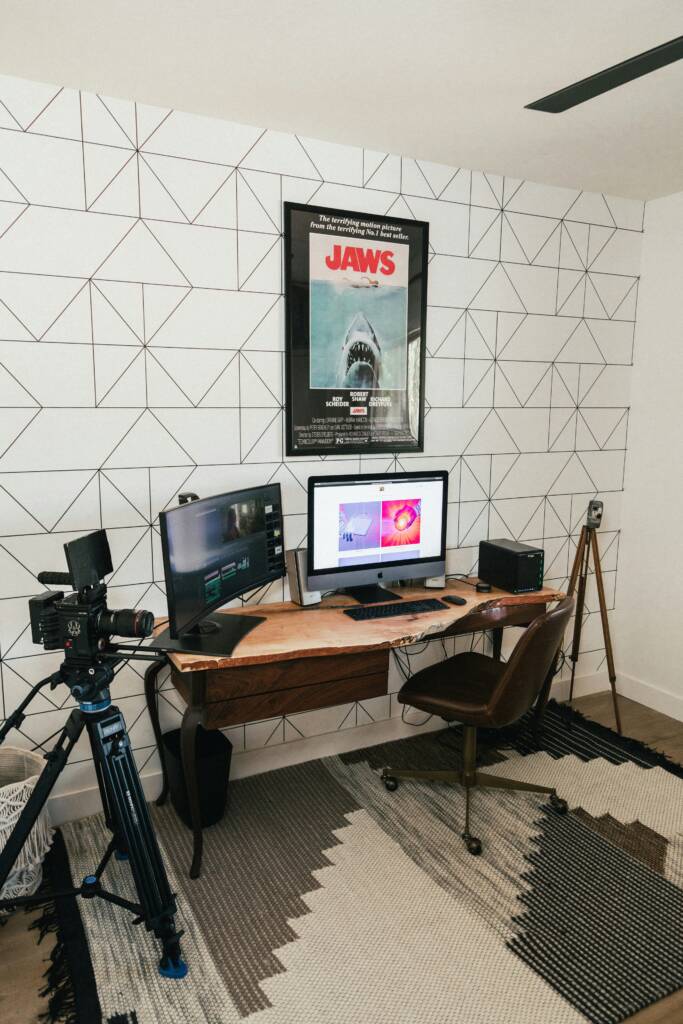
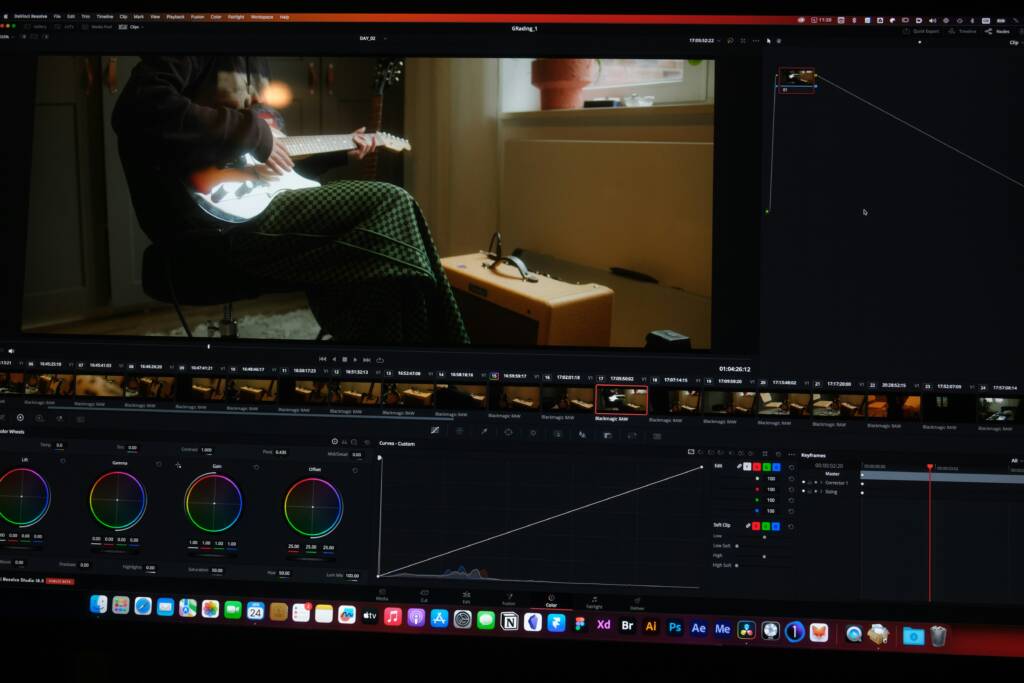
In the bustling world of content creation, a key factor driving success is finely tuned video editing. Striving for perfection in this aspect can be a challenging proposition, especially without professional assistance. That’s exactly where video editing companies, such as Social Channel Studios, step in to bring an unparalleled level of proficiency. Creators yearn for content that resonates with their audience, and partnering with an editing studio enhances their ability to do so. A beautiful symphony of compelling imagery, clear text, and engaging visuals – it’s a proven formula to boost the click-through rates (CTR) on platforms like YouTube.
Did you know that well-crafted thumbnails are like golden ticket invitations to the viewer’s eyes? Well, video editing studios are masters at creating such inviting thumbnails that command immediate attention. That’s not all. Partnering with these studios also allows content creators to unlock the freedom of enjoying life, bestowing them with more time to ideate and create, while the tedious task of video editing is handled by experienced professionals. Let’s remember, it’s not about making our service the hero of your journey, but letting you stay in the spotlight while we work quietly behind the scenes, amplifying your story. So, with a dash of good humor, a sprinkle of personal anecdotes, and a serving of easy-to-understand content, let’s start this venture to create magic together in the world of content creation.
If you are interested in hiring us or learning more about our services, please contact us today or book a free consult with one of our specialists. We look forward to working with you!
